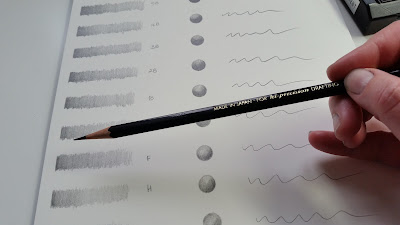It has flown by for me, with various challenges along with the way, but there are several constants that are always there - my family (and very tolerant husband), my friends and yes you guessed it, my love of art and the natural world.
What has been truly special this last year has been the number of people that have become interested in botanical art and natural history illustration. Some of them have been coming to courses and workshops for a few years now, one lady for 10 years ! The Natures Details Summer School courses were a joy to teach and what made them special was the learners' infectious enthusiasm and the sense of sharing that with everyone, along with the beautiful venue in the South Downs National Park, in Hampshire UK. There are more courses to follow in 2016 - starting earlier this year in March. Go to the website for more info.
The view from the 'Old Tractor Workshop' - venue for the Natures Details Courses
The botanical art courses at Peter Symonds College AHED in Winchester are very popular, with a 3rd class having been introduced in September. Last term I had 35 students in total and next term looks about the same.
As for my own artwork, subjects were varied this year. Several focused on my current project 'Art & the Hedgerow', which is leading up to the completion of another selection of paintings that will be exhibited at the RHS London Botanical Art Show on the 26th and 27th February.
Butterflies proved popular subjects too and this will continue into 2016 with a specific Butterfly & Moth Illustration course to be held at the Kingcombe Centre, Dorset in July.
I am hoping to complete some new butterfly and moth illustrations looking at their ecological relationships. Birds will no doubt play a part as well and this has already started with a drawing of Beebo the Tawny owl. He was one of the owls that visited us for the Sketching Owl's course in October. This drawing will also be making a special appearance in the not to distant future, although more about that to follow soon.
Beebo the Tawny owl
Onto sketchbooks. Many of you will know about my love of sketchbooks and this is great, but up until now I have never been able to complete one. Well this year I have managed it, even filling two in the process !
They are used in several ways: sticking 'lost' drawings and paintings in, creating detailed study pages, quick sketches, exercises for use in courses and lastly, they are a place for me to explore my love of nature in.
This year's sketchbooks - A3 in size and made by Pink Pig in Yorkshire, UK. The bottom sketchbook is my RHS project one and is still very much in use.
So here is a selection of pages from my botanical and natural history sketchbooks of 2015.
Wild garlic
Kingfisher - sketched from museum specimen
A popular page used in several courses this year. Painted lady butterfly.
Happy memories from a wonderful summer day spent with my friend and artist Susan at Old Winchester Hill, who had come all of the way from Vermont.
Preparation for a vellum painting - A View Inside - Foxglove.
A lost and found painting added to the back of the natural history sketchbook. Goldfinch.
Sketches and colour trials (also on vellum) of peaches from the stunning peach house at West Dean Gardens. It was so hot and almost impossible to paint, but the smell from the ripening peaches was divine !
A wonderful Autumn day sent with Claire from Drawn to Paint Nature sketching fungi in the New Forest, Hampshire
The new sketchbooks ready and waiting.
As they get dragged around everywhere with me I make fabric bags for them to go in.
This year there will be two A3 Amelie watercolour sketchbooks along with an 8x8 inch version, which will be just for butterflies, moths and other insects.
There have been two pieces of good news this week, helping to kick start the new 'botanical art' year.
I was thrilled to be one of the featured botanical artists in Garden News Magazine this week (2nd Jan issue). The article was perfect in showing how botanical art and gardening can go hand in hand.
Secondly, Anne-Marie Evans who created the first ever Botanical Illustration Diploma Course in the UK, was awarded an MBE in the Queen's New Years Honours list, for her services to Botanical Art and Education.
I am sure that many people are thrilled that she has been awarded this and it is also good news for botanical art too.
Read more about it here: News from Botanical Art and Artists
All I have to do now is wish you a very happy, healthy and creative 2016.
Thank you to everyone that follows this blog and the exploits of Natures Details elsewhere.
Happy painting !
Sarah
































































